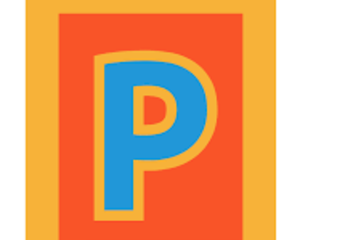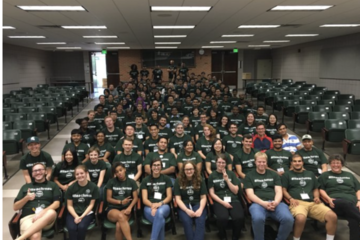Browse
Posted on: #iteachmsu

ASSESSING LEARNING
Creation Limitations
Description is the pattern of narrative development that aims to make vivid a place, object, character, or group. Description is one of four rhetorical modes, along with exposition, argumentation, and narration. In practice it would be difficult to write literature that drew on just one of the four basic modes.
Authored by:
Benote

Posted on: #iteachmsu


Creation Limitations
Description is the pattern of narrative development that aims to ma...
Authored by:
ASSESSING LEARNING
Monday, Aug 24, 2020
Posted on: #iteachmsu

Behavior Management Strategies
Text from William & Mary and Texas A&M https://education.wm.edu/centers/ttac/documents/packets/adhd.pdfThe goal of behavior management strategies is to help students learn to manage their ownbehavior. The following strategies are most effective when used in conjunction with evidence based instructional strategies.
Prevention StrategiesHere are some preventive measures that support students in demonstrating positivebehavior.
Nonverbal Supports: Together with the student, develop inconspicuous,nonverbal messages such as eye contact, hand gestures, or other signals that teachstudents to recognize the conditions that trigger specific behaviors. Once thesystem is developed, students can learn to manage their behavioral responsesbefore they occur.
For example, creating a signal and routine for “taking a five minutebreak” at a specified classroom location provides an opportunity for thestudent to recognize when he is becoming restless or frustrated and preventsbehavior from escalating. This system is most effective if used before thebehavior escalates or intensifies.
Choice as Reward: Choice in and of itself appears to be highly reinforcing.Provide choices of activities between assignments or embed choices withinassignments (e.g., choice of materials, readings, response modes, peer partners).Choices also provide students practice in decision making.
Checking With Chimes: In order to teach students to monitor their attention totask, set reminders at random intervals on an electronic device, such as asmartphone or kitchen timer. Time intervals should be set based on the student’sattention span and the pace of the lesson (typically 3 to 5 minutes). When thetone sounds, the student charts or marks whether she is engaged in learning. Asimple yes or no checklist works well. Students can monitor their own behaviorsby giving themselves points or checkmarks for appropriate behavior. Extra pointsmay be awarded when student and teacher ratings match. The student could thenchart her score using a computer program, tablet, smartphone, graph paper, orposter board.
Prevention StrategiesHere are some preventive measures that support students in demonstrating positivebehavior.
Nonverbal Supports: Together with the student, develop inconspicuous,nonverbal messages such as eye contact, hand gestures, or other signals that teachstudents to recognize the conditions that trigger specific behaviors. Once thesystem is developed, students can learn to manage their behavioral responsesbefore they occur.
For example, creating a signal and routine for “taking a five minutebreak” at a specified classroom location provides an opportunity for thestudent to recognize when he is becoming restless or frustrated and preventsbehavior from escalating. This system is most effective if used before thebehavior escalates or intensifies.
Choice as Reward: Choice in and of itself appears to be highly reinforcing.Provide choices of activities between assignments or embed choices withinassignments (e.g., choice of materials, readings, response modes, peer partners).Choices also provide students practice in decision making.
Checking With Chimes: In order to teach students to monitor their attention totask, set reminders at random intervals on an electronic device, such as asmartphone or kitchen timer. Time intervals should be set based on the student’sattention span and the pace of the lesson (typically 3 to 5 minutes). When thetone sounds, the student charts or marks whether she is engaged in learning. Asimple yes or no checklist works well. Students can monitor their own behaviorsby giving themselves points or checkmarks for appropriate behavior. Extra pointsmay be awarded when student and teacher ratings match. The student could thenchart her score using a computer program, tablet, smartphone, graph paper, orposter board.
Authored by:
chathu

Posted on: #iteachmsu


Behavior Management Strategies
Text from William & Mary and Texas A&M https://education.wm...
Authored by:
Friday, Aug 21, 2020
Posted on: #iteachmsu

Factors that foster attention
Factors that foster attention, positive behavior, and academic and social success includeestablishing positive relationships with students, adopting classroom management techniques,and creating a physical arrangement that facilitates learning.
Authored by:
chathu

Posted on: #iteachmsu


Factors that foster attention
Factors that foster attention, positive behavior, and academic and ...
Authored by:
Friday, Aug 21, 2020
Posted on: #iteachmsu

DISCIPLINARY CONTENT
Posted on: #iteachmsu

Creation Path
Creation Path
Authored by:
DISCIPLINARY CONTENT
Wednesday, Aug 19, 2020
Posted on: #iteachmsu

Team Building Exercises and Activities
Making Team Building an Everyday Priority
Shakira's team is experienced and hard-working – but, lately, its performance has been "hit and miss."
The team seems to have lost some of its energy and motivation, and morale is beginning to drop. So, Shakira decides to get her people back on track by exploring some team building strategies and activities.
Team building is about providing the skills, training and resources that your people need, so that they can work in harmony. But, to be truly effective, it needs to be a continual process, embedded into your team and organization's culture.
There's a place for one-off team building exercises, but they need to have a clear purpose, such as improving a particular skill, and must be well designed to avoid conflict.
In this article and video, you can explore how to use team building activities and exercises as part of an ongoing strategy for developing a strong and effective team.
Shakira's team is experienced and hard-working – but, lately, its performance has been "hit and miss."
The team seems to have lost some of its energy and motivation, and morale is beginning to drop. So, Shakira decides to get her people back on track by exploring some team building strategies and activities.
Team building is about providing the skills, training and resources that your people need, so that they can work in harmony. But, to be truly effective, it needs to be a continual process, embedded into your team and organization's culture.
There's a place for one-off team building exercises, but they need to have a clear purpose, such as improving a particular skill, and must be well designed to avoid conflict.
In this article and video, you can explore how to use team building activities and exercises as part of an ongoing strategy for developing a strong and effective team.
Authored by:
chathu

Posted on: #iteachmsu


Team Building Exercises and Activities
Making Team Building an Everyday Priority
Shakira's team is expe...
Shakira's team is expe...
Authored by:
Friday, Aug 14, 2020
Posted on: #iteachmsu

ASSESSING LEARNING
Getting Started
What is the #iteachmsu Commons?
Welcome to the #iteachmsu Commons
You teach MSU. We, the Academic Advancement Network, The Graduate School, and The Hub for Innovation in Learning and Technology, believe that a wide educator community (faculty, TAs, ULAs, instructional designers, academic advisors, et al.) makes learning happen across MSU. But, on such a large campus, it can be difficult to fully recognize and leverage this community’s teaching and learning innovations. To address this challenge, the #iteachmsu Commons provides an educator-driven space for sharing teaching resources, connecting across educator networks, and growing teaching practice.
#iteachmsu Commons content may be discipline-specific or transdisciplinary, but will always be anchored in teaching competency areas. You will find short posts, blog-like articles, curated playlists, and a campus-wide teaching and learning events calendar. We cultivate this commons across spaces. And through your engagement, we will continue to nurture a culture of teaching and learning across MSU and beyond.
How to login
To begin creating content of your own on the #iteachmsu Commons, simply click the green Login button in the upper right hand corner of the screen. Your account will automatically be provisioned after successfully logging into the MSU Net ID login prompt. Currently, only authenticated MSU faculty, staff and students can create content on the #iteachmsu Commons. However, external users are free to browse and share public facing content without logging into the site.
Where to start
If you are looking for brief instructive videos on the core functionality of the site, take a look at our Getting Started playlist. After viewing each one of the video tutorials on the playlist, you will receive a Contributor badge which will display on your profile .
What Are the #iteachmsu Commons Policies?
Part of the mission of the #iteachmsu Commons is to provide space for sharing, reflecting, and learning for all educators on our campus wherever they are in their teaching development. The commons is designed to encourage these types of interactions and reflect policies outlined by the MSU Faculty Senate. We maintain the right to remove any post that violates guidelines as outlined here and by MSU. To maintain a useful and safer commons, we ask that you:
Follow the MSU Guidelines for Social Media.
Engage across the #iteachmsu commons in a civil and respectful manner. Content may be moderated in accordance with the MSU Guidelines for Social Media.Do not share private or confidential information via shared content on the #iteachmsu Commons.
Content posted on the #iteachmsu Commons is licensed under a Creative Commons Attribution-NonCommercial-ShareAlike 4.0 International license. Learn more about this licensing here. Posted comments, images, etc. on the #iteachmsu Commons do not necessarily represent the views of Michigan State University or the #iteachmsu Commons Team. Links to external, non-#iteachmsu Commons content do not constitute official endorsement by, or necessarily represent the views of, the #iteachmsu Commons or Michigan State University.
Other important policies:
MSU's Web Accessibility Statement
MSU's Privacy Statement
What if I Have #iteachmsu Commons Questions and/or Feedback?
If you have any concerns about #iteachmsu Commons content, please email us at iteach@msu.edu. We welcome all feedback and thank you for your help in promoting a safer, vibrant and respectful community.
Welcome to the #iteachmsu Commons
You teach MSU. We, the Academic Advancement Network, The Graduate School, and The Hub for Innovation in Learning and Technology, believe that a wide educator community (faculty, TAs, ULAs, instructional designers, academic advisors, et al.) makes learning happen across MSU. But, on such a large campus, it can be difficult to fully recognize and leverage this community’s teaching and learning innovations. To address this challenge, the #iteachmsu Commons provides an educator-driven space for sharing teaching resources, connecting across educator networks, and growing teaching practice.
#iteachmsu Commons content may be discipline-specific or transdisciplinary, but will always be anchored in teaching competency areas. You will find short posts, blog-like articles, curated playlists, and a campus-wide teaching and learning events calendar. We cultivate this commons across spaces. And through your engagement, we will continue to nurture a culture of teaching and learning across MSU and beyond.
How to login
To begin creating content of your own on the #iteachmsu Commons, simply click the green Login button in the upper right hand corner of the screen. Your account will automatically be provisioned after successfully logging into the MSU Net ID login prompt. Currently, only authenticated MSU faculty, staff and students can create content on the #iteachmsu Commons. However, external users are free to browse and share public facing content without logging into the site.
Where to start
If you are looking for brief instructive videos on the core functionality of the site, take a look at our Getting Started playlist. After viewing each one of the video tutorials on the playlist, you will receive a Contributor badge which will display on your profile .
What Are the #iteachmsu Commons Policies?
Part of the mission of the #iteachmsu Commons is to provide space for sharing, reflecting, and learning for all educators on our campus wherever they are in their teaching development. The commons is designed to encourage these types of interactions and reflect policies outlined by the MSU Faculty Senate. We maintain the right to remove any post that violates guidelines as outlined here and by MSU. To maintain a useful and safer commons, we ask that you:
Follow the MSU Guidelines for Social Media.
Engage across the #iteachmsu commons in a civil and respectful manner. Content may be moderated in accordance with the MSU Guidelines for Social Media.Do not share private or confidential information via shared content on the #iteachmsu Commons.
Content posted on the #iteachmsu Commons is licensed under a Creative Commons Attribution-NonCommercial-ShareAlike 4.0 International license. Learn more about this licensing here. Posted comments, images, etc. on the #iteachmsu Commons do not necessarily represent the views of Michigan State University or the #iteachmsu Commons Team. Links to external, non-#iteachmsu Commons content do not constitute official endorsement by, or necessarily represent the views of, the #iteachmsu Commons or Michigan State University.
Other important policies:
MSU's Web Accessibility Statement
MSU's Privacy Statement
What if I Have #iteachmsu Commons Questions and/or Feedback?
If you have any concerns about #iteachmsu Commons content, please email us at iteach@msu.edu. We welcome all feedback and thank you for your help in promoting a safer, vibrant and respectful community.
Authored by:
Admin #iteachmsu

Posted on: #iteachmsu


Getting Started
What is the #iteachmsu Commons?
Welcome to the...
Welcome to the...
Authored by:
ASSESSING LEARNING
Wednesday, Jul 29, 2020
Posted on: #iteachmsu

ASSESSING LEARNING
World Computer Exchange: WCE
Explore nature at The Datai Langkawi. Enjoy the beautiful rain forest setting and our nature facilities and activities while learning from our expert team.
Authored by:
Benote

Posted on: #iteachmsu


World Computer Exchange: WCE
Explore nature at The Datai Langkawi. Enjoy the beautiful rain fore...
Authored by:
ASSESSING LEARNING
Tuesday, Jul 28, 2020
Posted on: #iteachmsu

ASSESSING LEARNING
Green development user engagement
Green development is a real estate development concept that carefully considers social and environmental impacts of development. It is defined by three sub-categories: environmental responsiveness, resource efficiency, and community and cultural.
Authored by:
Neil

Posted on: #iteachmsu


Green development user engagement
Green development is a real estate development concept that careful...
Authored by:
ASSESSING LEARNING
Tuesday, Jul 28, 2020


